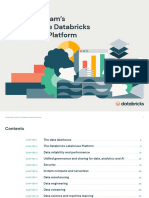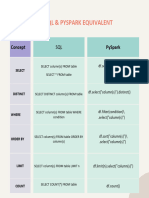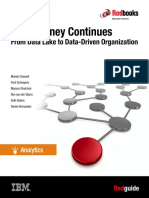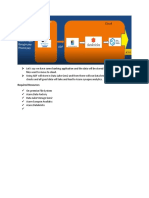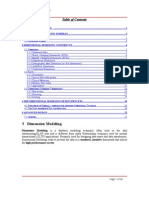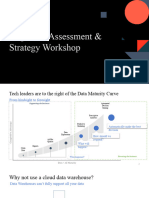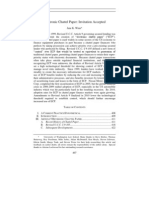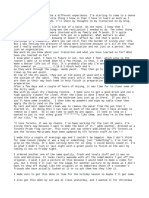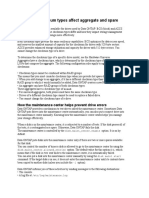0% found this document useful (0 votes)
459 views52 pagesDe Mod 4 Build Data Pipelines With Delta Live Tables
The document discusses Delta Live Tables (DLT) in Databricks. It provides an overview of the key concepts, including:
- DLT allows users to easily build batch and streaming data pipelines on Delta Lake to reliably move data between the bronze, silver and gold layers.
- Live tables are materialized views defined by SQL queries that are kept up-to-date by pipelines. This simplifies ETL operations.
- Streaming live tables ensure exactly-once processing of input rows and only read data once to reduce costs and latency.
- The document demonstrates how to create a basic live table pipeline with three steps: defining the table, creating a pipeline, and starting the pipeline.
Uploaded by
nizammbb2uCopyright
© © All Rights Reserved
We take content rights seriously. If you suspect this is your content, claim it here.
Available Formats
Download as PDF, TXT or read online on Scribd
0% found this document useful (0 votes)
459 views52 pagesDe Mod 4 Build Data Pipelines With Delta Live Tables
The document discusses Delta Live Tables (DLT) in Databricks. It provides an overview of the key concepts, including:
- DLT allows users to easily build batch and streaming data pipelines on Delta Lake to reliably move data between the bronze, silver and gold layers.
- Live tables are materialized views defined by SQL queries that are kept up-to-date by pipelines. This simplifies ETL operations.
- Streaming live tables ensure exactly-once processing of input rows and only read data once to reduce costs and latency.
- The document demonstrates how to create a basic live table pipeline with three steps: defining the table, creating a pipeline, and starting the pipeline.
Uploaded by
nizammbb2uCopyright
© © All Rights Reserved
We take content rights seriously. If you suspect this is your content, claim it here.
Available Formats
Download as PDF, TXT or read online on Scribd
/ 52














